When we think of ground covers, we often think of things like alyssum, grasses, sedums, and other fast-spreading, low-growing plants that cover or creep along the earth.
Essentially, they function as living mulches to reduce weeds and retain moisture by blocking sunlight. They’re usually grown in garden paths or along borders, and thought of as ornamental plantings to beautify and unite a landscape.
But ground covers can also be grown in a vegetable garden—right inside the beds themselves—to serve the same function as an organic mulch like arborist wood chips, chopped leaves, or straw would.
In an edible garden, where I’m trying to maximize production of my land in a way that’s beneficial to the ecosystem as well, I sometimes feel like a layer of non-edible mulch is a wasted opportunity to do more.
That’s where living mulches come in—specifically, edible living mulches and ground covers, which are one of my favorite lazy gardening strategies for a low-effort, high-return vegetable garden.
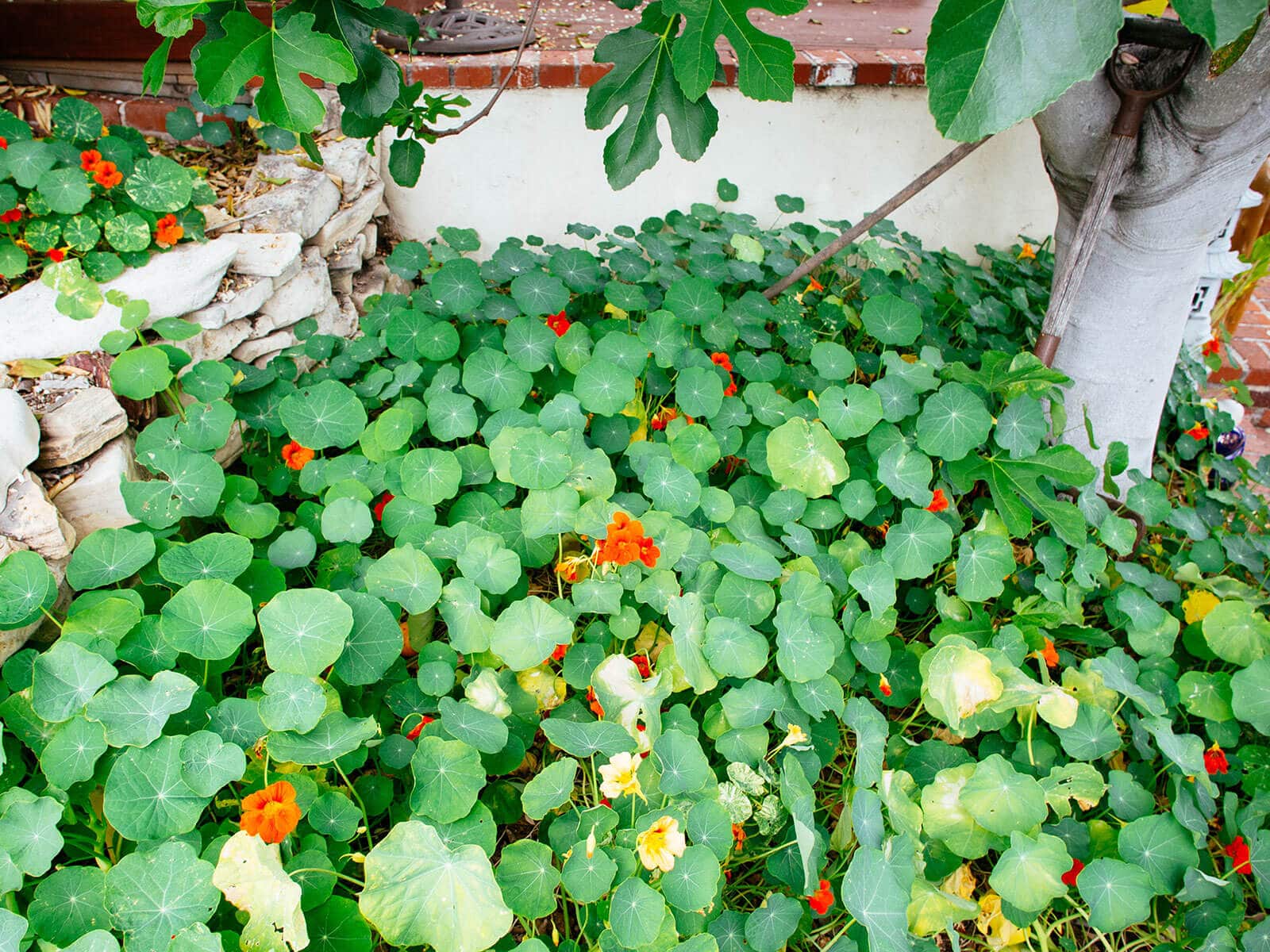
What are the benefits of living mulches?
There’s no denying the importance of mulch. In addition to smothering weeds and conserving water, it reduces soil erosion and helps curb the spread of disease in a garden (by preventing soil from splashing back up onto the leaves).
It also keeps the garden neat and tidy, and most organic mulches (including cover crops like fava beans or Austrian winter peas that you cut down and leave in place) eventually break down and add nutrients back into the soil.
Living mulches (also known as green mulches) are the ideal solution for low-maintenance landscapes and lazy gardeners.
You might be wondering how this is possible when it requires more planting and more harvesting?
It’s simple: living mulches work in synergy with the plants around them. They grow and interact with their environment in a way that reflects how plants grow in nature.
Living mulches are not for those who desire perfectly manicured gardens where no plants are touching and everything is spaced just so, leaving lots of bare soil open to sunlight and weed seeds.
Read more: Learn how to plant intensively in a raised bed to maximize your harvests
Living mulches offer a more natural aesthetic that lets plants be planted more intensively for reciprocal benefit.

One plant shields the soil while another acts as a trap crop. Hardy, low-growing herbs repel pests while taller vegetables offer shade in mid-summer.
All the different heights and structures of the plants—from small leaves to big leaves, soft clumps to tall stalks—provide habitat for a variety of wildlife species that pollinate flowers, break down organic matter, and increase biodiversity in your yard to where you’re actually building an ecosystem, not just growing a garden.
This, in turn, mitigates the need for constant mulching, uses natural systems for pest control, and replenishes the soil without over-watering or over-fertilizing.
Living mulches and green mulches are by far the best solution for boosting fertility and increasing yield while requiring less work in the long run.
It’s okay to be lazy
Grow more food—with less work.
I’ll teach you how to be the most productive, lazy gardener ever, the same way I’ve been doing it for years. While everyone else is struggling with soil and battling pests, you’ll be harvesting armloads of nutrient-rich food from your own yard, all season long.
But is there a better way to mulch in a vegetable garden so you can fully utilize every square inch of growing space for food?
Yes! Try edible ground covers.

Intercropping with edible ground covers
Planting edible ground covers in the empty rows and patches between your vegetables is a type of intercropping (also known as interplanting).
Intercropping is the practice of growing multiple crops within the same space in order to achieve a greater yield from land that otherwise would be left unused by a single crop.
Usually, vegetable gardeners will tuck quick-growing crops like lettuces and radishes under taller and slower-growing crops like tomatoes and peppers.
Related: Running out of time before the first frost? These are the best fast-growing vegetables you can harvest in 40 days (or less)
While these early-maturing varieties make good understory plants, they need to be reseeded often so you’re not continually left with bare soil after every harvest.
A better option in a vegetable garden is to grow long-season annuals or non-aggressive perennials that stay low to the ground, don’t compete for nutrients, and have other benefits like attracting pollinators or repelling pests. You plant them once in the beginning of the season, and reap the benefits from first sprout through last harvest.
Here are my six favorite ground covers for vegetable gardens that are not only ornamental, but edible as well.
The best edible ground covers for vegetable gardens
1. Nasturtiums
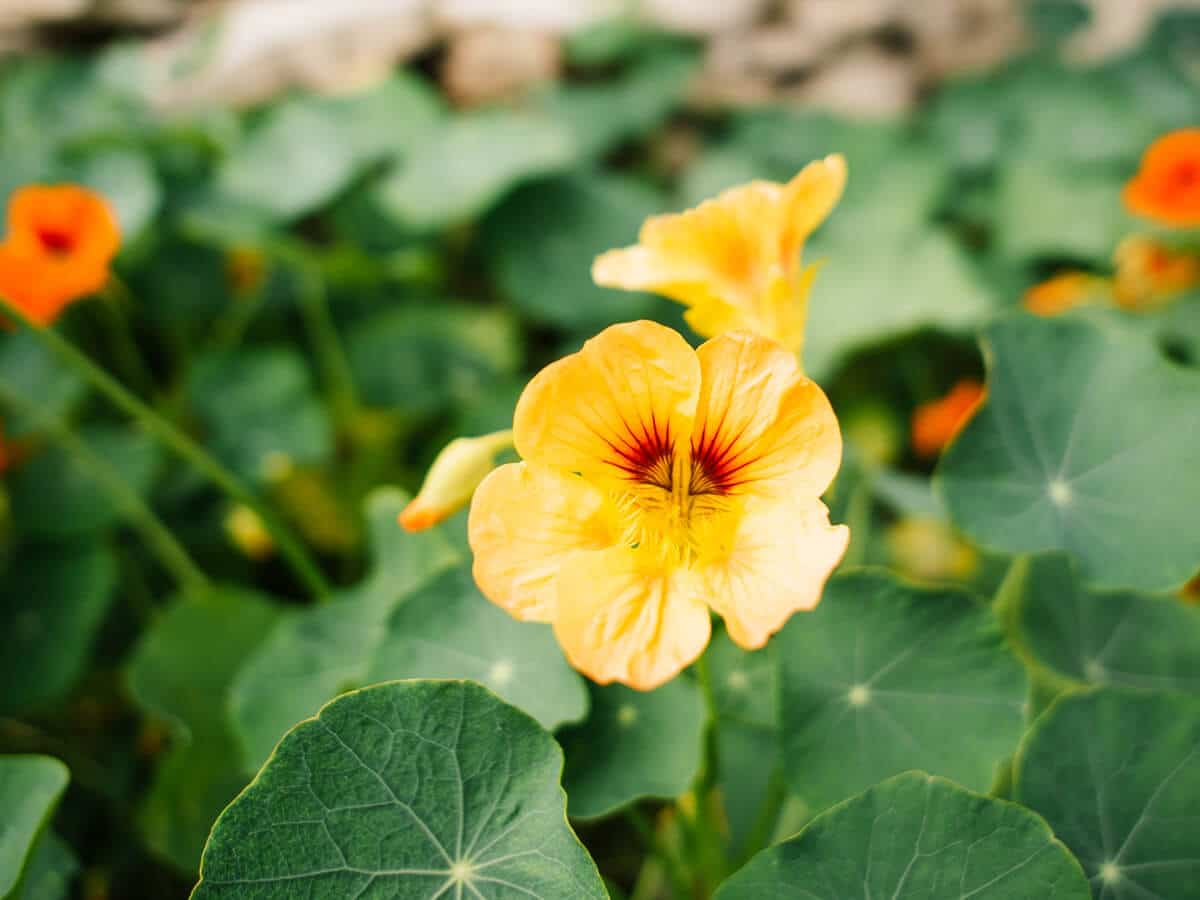
Most people think of nasturtiums (Tropaeolum majus) as flowers, but they’re also vegetables in their own right. (See my recipes for nasturtium pesto and poor man’s capers.)
These self-seeding annuals grow quickly on long, thin vines that drape over garden beds beautifully.
Their lush green leaves are reminiscent of lily pads, and when they bloom, the flowers attract pollinators all day long, making them a good option as a ground cover for berries, cucumbers, and other crops that need more than just wind for pollination.
Nasturtiums are also highly attractive to aphids, which may sound like a nuisance to some, but this is what makes them such a great trap crop—that is, a crop that’s sacrificed in order to keep aphids off your more valuable crops.
Plant them around susceptible crops and as soon as you see an infestation on your nasturtiums, pull and trash the affected plants so the aphids don’t jump to your other crops.
2. Oregano
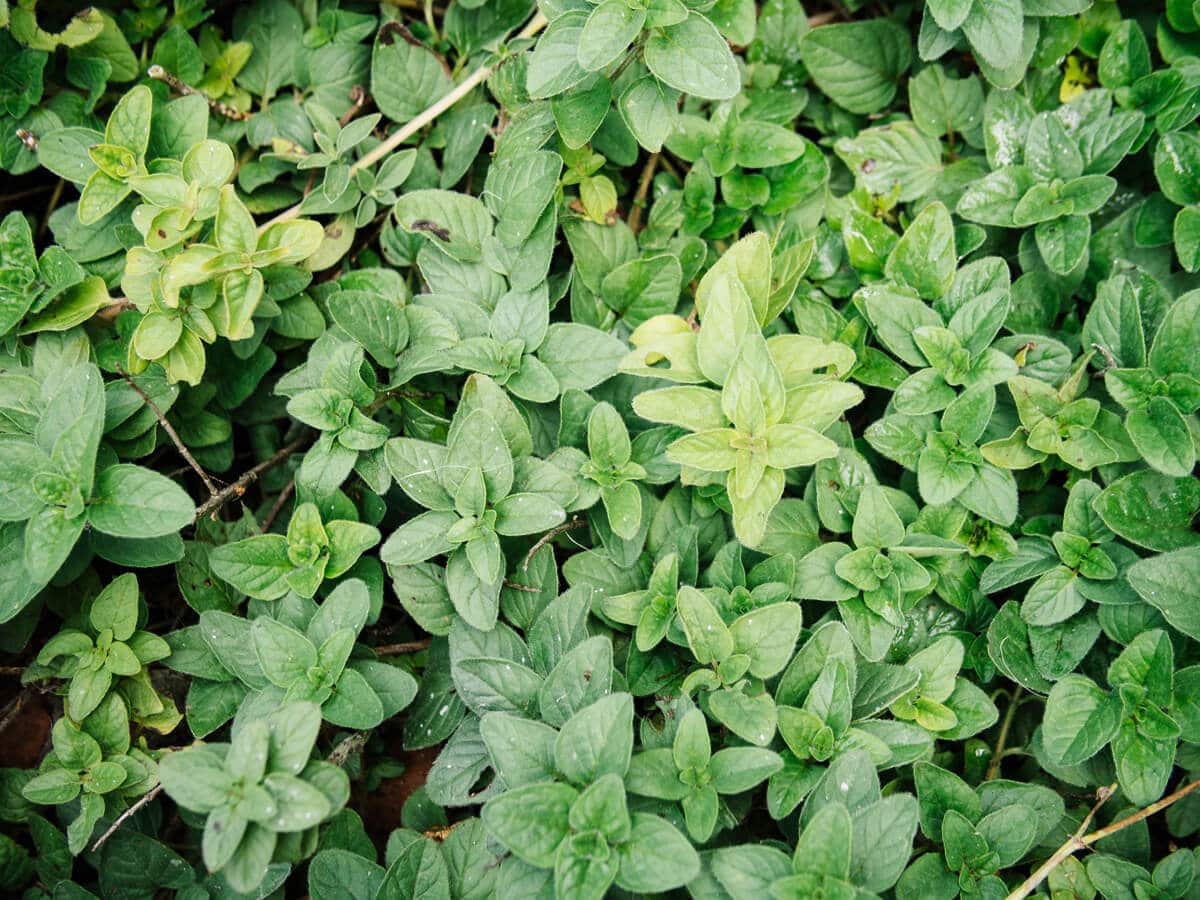
Herbs like oregano (and its Mediterranean cousins, thyme and marjoram) are ideal for in-ground garden beds that see some foot traffic. This type of ground cover can tolerate a little trampling and still be effective as an ornamental and edible plant. In mild climates, it can be grown as an evergreen ground cover (especially the creeping varieties) to protect the soil year-round.
As a bonus: Stepping on oregano releases its fragrance into the air, and it’s these same aromatic oils that help repel insects like fleas.
Oregano (Origanum vulgare) is a loose, open plant that can grow up to 2 feet tall, but likes being pinched back to maintain a low and bushy growth habit.
Creeping oregano (Origanum vulgare ‘Humile’), on the other hand, quickly spreads to form a dense mat under 3 inches tall. (The same is true for creeping thyme and creeping marjoram.)
Bees love the clusters of delicate flowers that bloom in summer. (For humans, the flowers make a fragrant and pretty garnish for soups, salads, and other dishes.)
The herb is a cold-hardy, drought-tolerant perennial (often surviving freezing temperatures) and likes well-draining soil and full sun (though it will also grow in partial shade).
That means it should only be used as a ground cover for plants with similar water needs, such as chard, okra, and artichokes. It also grows well with deep-rooted plants that don’t need to be continually saturated.
Learn more: Know how deep your vegetable crops go so you can plan your garden accordingly
3. True French sorrel
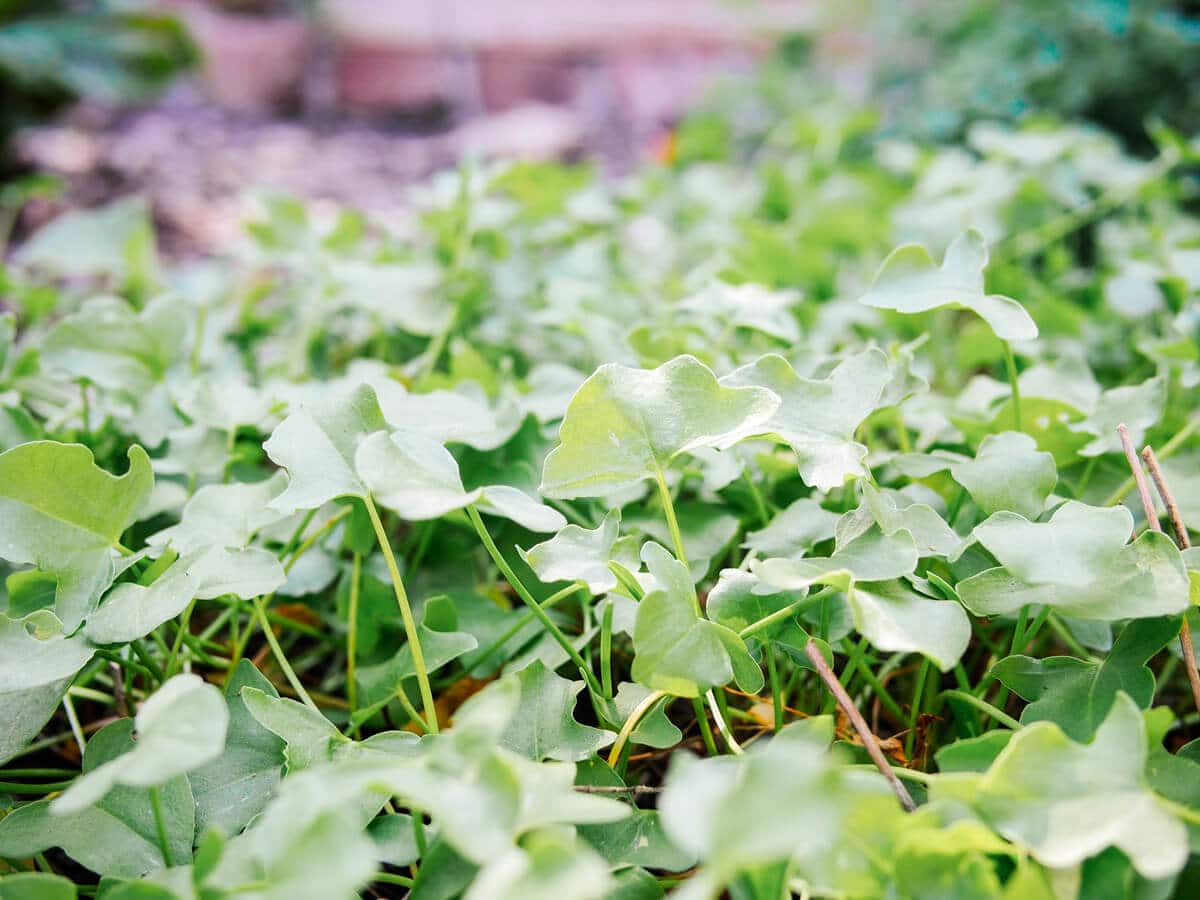
True French sorrel (Rumex scutatus) is what I sometimes call the uncommon sorrel, in contrast to the common sorrel or garden sorrel (Rumex acetosa) or red-veined sorrel (Rumex sanguineus, also known as bloody dock) that’s more readily available in garden centers.
The plant is a low-growing hardy perennial with distinctive shield-shaped leaves. A couple of small plants will quickly grow into a patch less than 12 inches tall.
In my own garden, where I planted True French sorrel in a bed that received partial shade, it stayed under 6 inches tall.
I love to grow it because it’s low-maintenance, not so common, and has a lemony flavor that’s unlike anything else in my garden.
As a ground cover, it stays a brilliant green year-round and the clumps can be lifted, divided, and replanted elsewhere when you need to fill in some space in your garden beds.
4. Wood sorrel
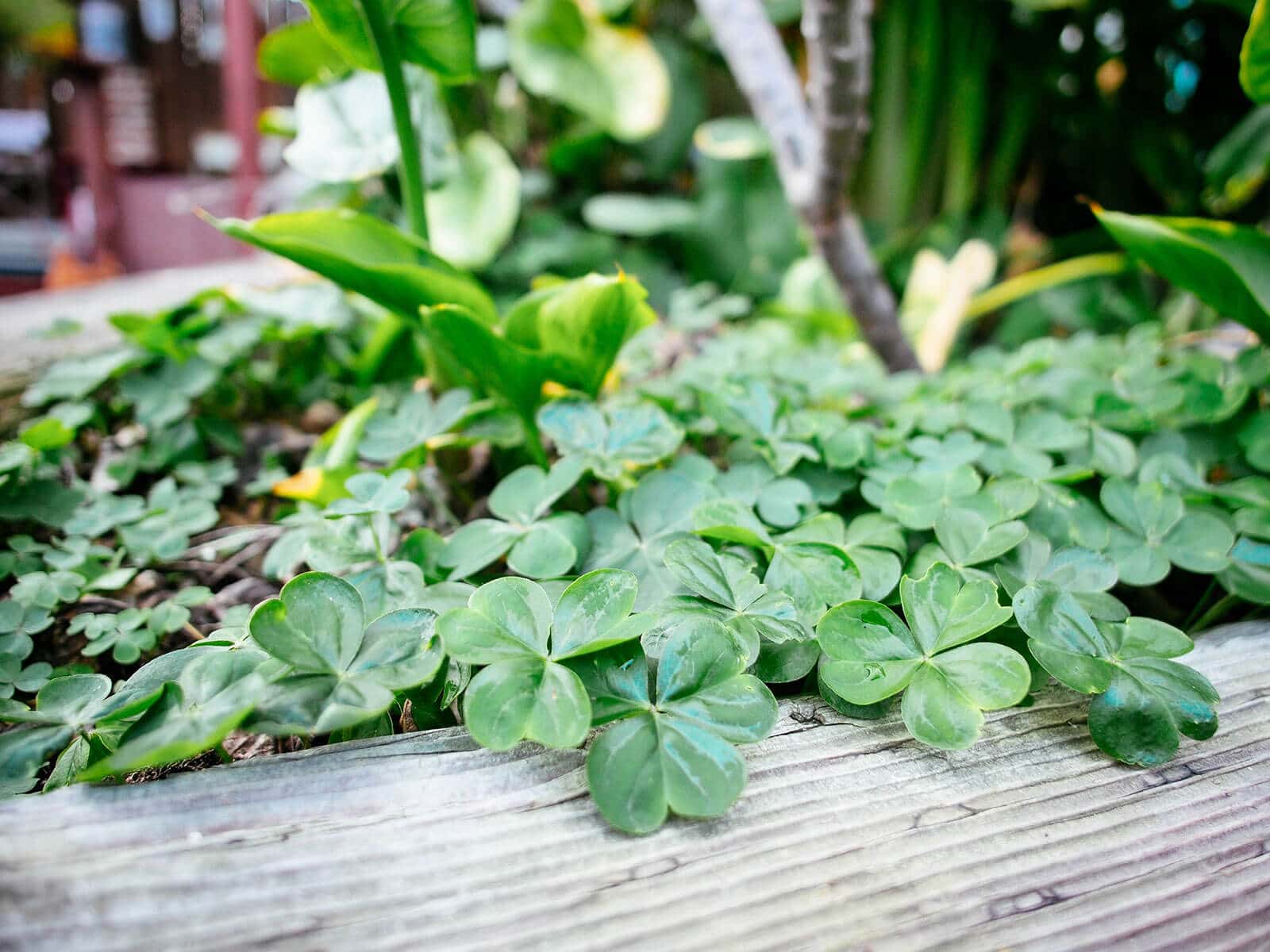
This type of sorrel (Oxalis acetosella) usually shows up as a perennial weed in most people’s gardens, but like many other weeds (dandelion and mallow, for example), wood sorrel is 100 percent edible.
The heart-shaped leaves, petite yellow flowers, and immature green seed pods can all be eaten fresh, used as seasonings for salads and sauces, or steeped in hot water and sweetened with honey to make wood sorrel tea.
Its name, oxalis, means sour, and the high oxalic acid content in the leaves give them a fresh, lemony flavor.
People often mistake wood sorrel for shamrock because of its leaflets that fold upward in the center. However, true shamrocks (or Irish shamrocks) belong to the genus Trifolium, which are clovers. Botanically, there’s no consensus as to which species of Trifolium is the shamrock of Irish fame, but you can’t go wrong with any four-leaf clover!
Wood sorrel likes moist soil with partial shade (woodsy areas, being true to its name). Its leaves can grow up to 1 inch wide, and the plant spreads via underground runners to form a silky green carpet 6 to 12 inches tall, on average.
It’s not an aggressive plant and can easily be pulled when it’s no longer desired in the garden. (Fun fact: If you keep chickens, they go crazy for wood sorrel!)
5. Alpine strawberries
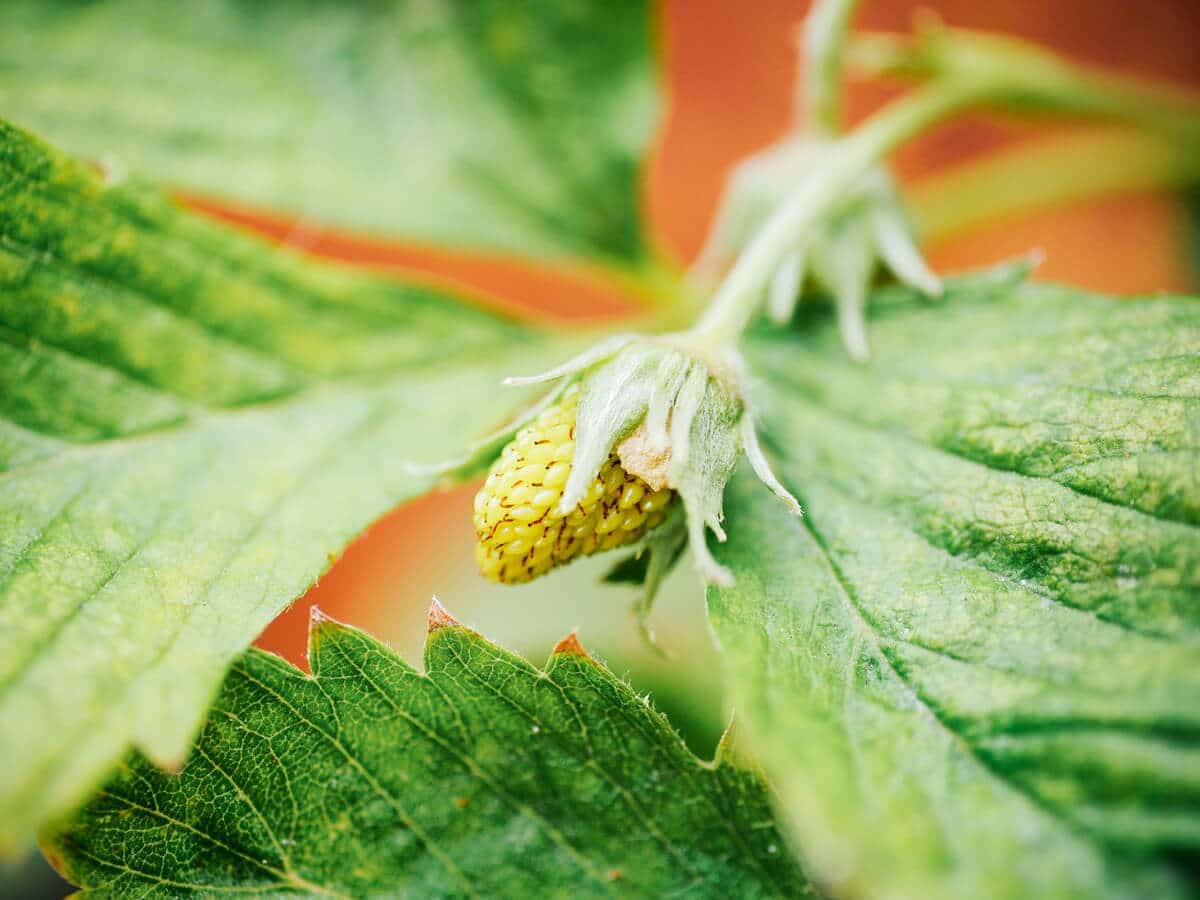
Unlike garden strawberries (Fragaria ananassa), most varieties of alpine strawberries (Fragaria vesca) don’t self-propagate via runners, making them a friendly option for intercropping.
Further reading: Get bigger, juicier berries with my plant spacing guide for strawberries
Since alpine strawberries produce tiny (yet delectably sweet and fragrant) fruit, many gardeners skip them in favor of big, juicy garden strawberries because they find the smaller, near-wild cultivars aren’t worth the effort.
It’s true that you would need several plants to harvest a single cup of alpine strawberries. But, I promise that it is worth the effort once you’ve tasted them! (Read more about the Yellow Wonder alpine strawberries I grew in my garden.)
As an edible ground cover, however, alpine strawberries tick off all the boxes: tough yet non-invasive, and able to tolerate a variety of soil conditions (especially if you forget to water for a short spell).
They have a low growth habit and tend to hold fruits up high, often above the leaves. Alpine strawberries are everbearing, so they’ll flower and fruit from spring through fall (or until the first hard frost).
Because of its pale color, the Yellow Wonder cultivar, in particular, doesn’t attract birds the way bright red strawberries do, leaving more berries for you!
6. Pumpkins, winter squash, and melons
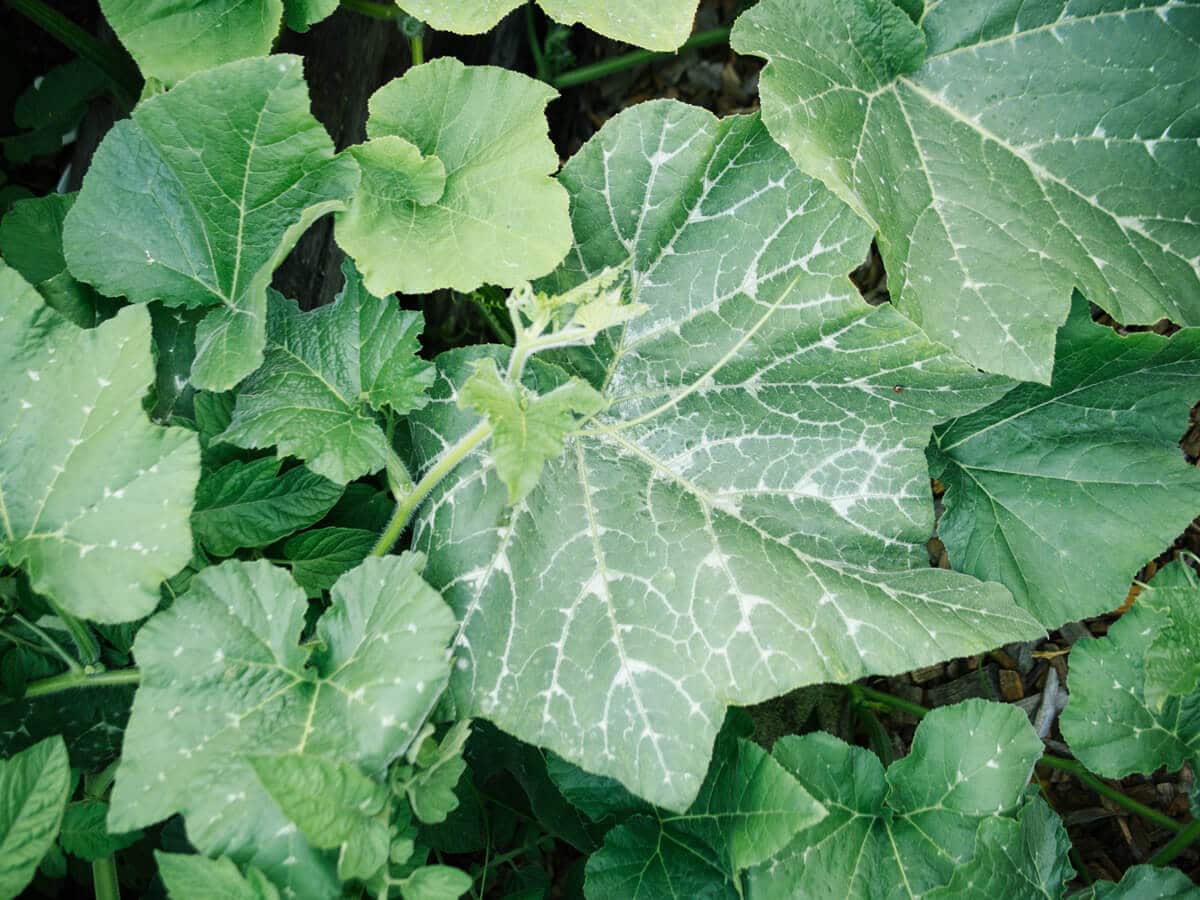
If you’ve ever grown a Three Sisters garden, then it should come as no surprise that pumpkins, winter squash, and melons (Cucurbitaceae family) make excellent ground covers for large open spaces.
And that’s the key: They should only be planted in large open spaces, otherwise they could make it difficult for you to harvest your other crops (not to mention the amount of real estate they take up).
The sprawling vines are thick and prolific (which is what makes them so effective as a ground cover) and have a tendency to climb, so they should be kept away from structures where their climbing habit isn’t desired.
In small spaces, consider planting another cucurbit as an edible ground cover: cucumbers.
Though we usually think of them as climbers, cucumbers grow perfectly fine along the ground. They still produce vigorous vines, but the smaller leaves and smaller fruits make them more manageable than winter squash and melons.
Compact varieties like Mexican Sour Gherkins are another good option to try if you need to cover a smaller garden plot.
This post updated from an article that originally appeared on April 18, 2018.


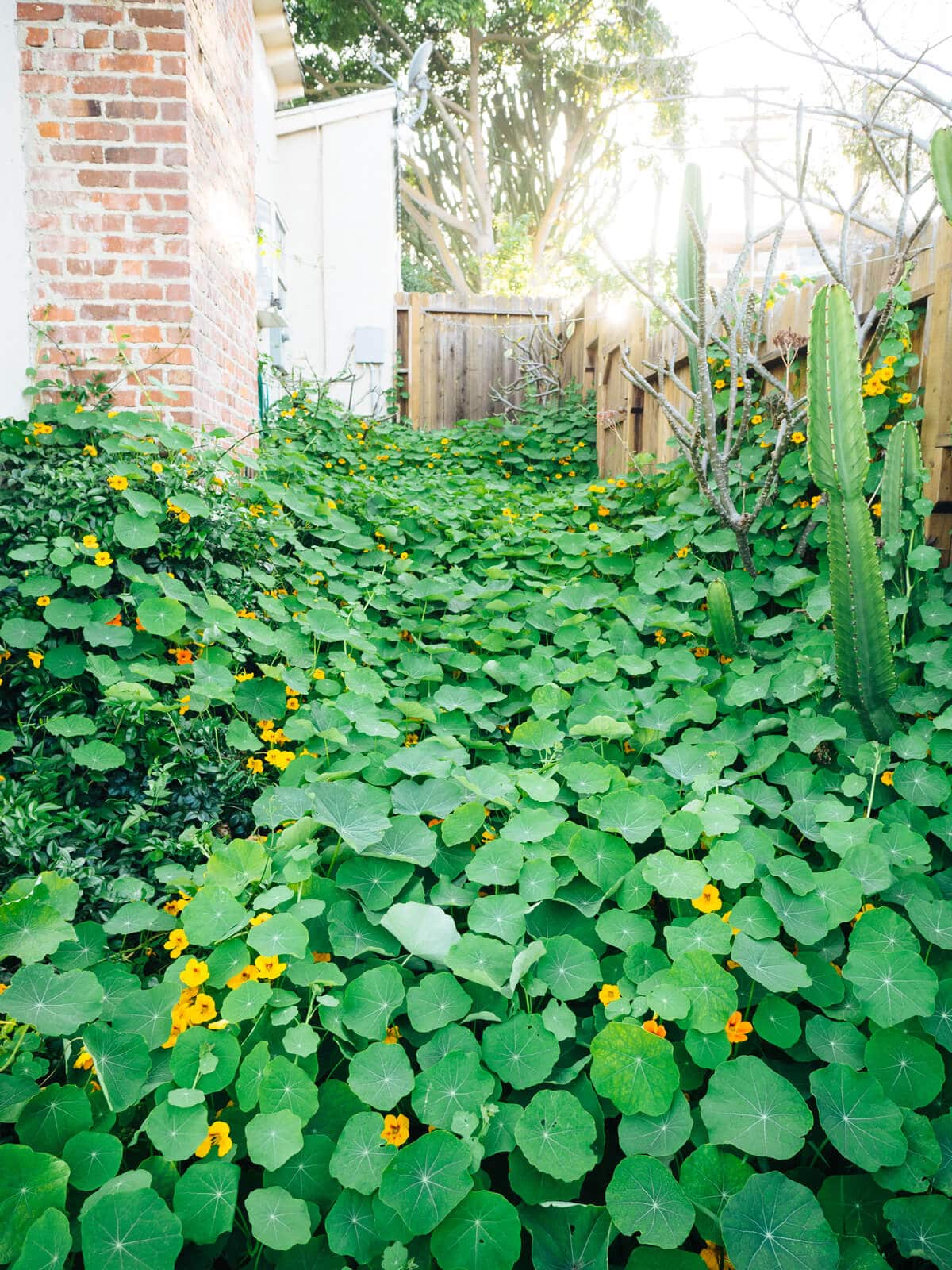













What are good ground cover choices for a sloped area where I plan to use metal troughs for raised beds. I would like to see the soil around the metal troughs covered with flowers, green leaves, creeper, or fragrant vines. Heard radish or peanut plants really mend the soil and make it rich. Soil in these beds is very hard, erosion issues because of Steep. slope. I wish I could share a picture with you
Everything Ive read about any sorrel says its an invasive plant that will take over your garden. ( Take over everything) Some say they cut the flowers stems off and burn them before they seed to keep it under control. Do you actually use this plant yourself? I’m trying to be as weed free in my garden as possible I don’t need to replace one weed for another. Also some may be toxic to animals .I honestly don’t think its a great idea suggesting this plant.
ALSO I FOUND THIS; KNOWN HAZARDS Plants can contain quite high levels of oxalic acid, which is what gives the leaves of many members of this genus an acid-lemon flavour. Perfectly alright in small quantities, the leaves should not be eaten in large amounts since the oxalic acid can lock-up other nutrients in the food, especially calcium, thus causing mineral deficiencies. The oxalic acid content will be reduced if the plant is cooked. People with a tendency to rheumatism, arthritis, gout, kidney stones or hyperacidity should take especial caution if including this plant in their diet since it can aggravate their condition[238].
Everything Ive read about any sorrel says its an invasive plant that will take over your garden. ( Take over everything) Some say they cut the flowers stems off and burn them before they seed to keep it under control. Do you actually use this plant yourself? I’m trying to be as weed free in my garden as possible I don’t need to replace one weed for another. Also some may be toxic to animals .I honestly don’t think its a great idea suggesting this plant.
I was thinking today, while trying to decide what type of low growing plant would work nicely with my newly planted blueberries, I thought, “edible ground cover!!” That’s how I found this WONDERFUL article!!
Thank you! Love all the details and the pics are just beautiful!
Now, I hope I can find these lovely plants in my area!!
I am enjoying all your latest posts about gardening!
I’m so happy to hear that! Thank you for reading!
Another excellent ground cover is sweet potato. If you plant the vining type they can run up to 4 to 10′ in each direction. Plant one every 18″ or even as far apart as 3′ and your ground will be covered in no time. It is a beautiful ivy looking plant, pest/disease resistant and will keep looking good until the weather gets too cold for them. One year I grew them in the front yard, and they cascaded over my retaining wall, garnering many compliments. I grow them in extra large ceramic pots flanking my front door – most people have no idea there is food under the pretty vines. Harvest time you just whack them back, find the crowns and dig away. Word of warning – once grown you will have them forever unless you search very diligently for all the roots. Not a bad problem to have honestly. 🙂
Sweet potato vines make a lovely ground cover! And the leaves are edible too!
Are you talking the ornamental variety or the ones with edible darker green leaves?